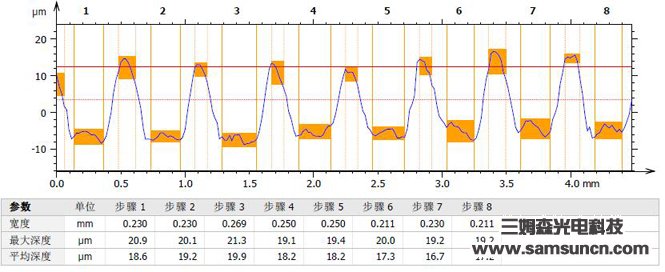Glass
Solar photovoltaic glass embossed depth and thickness measurement
Solar photovoltaic glass is mainly used in solar cell encapsulation glass, is an indispensable and important component of solar photovoltaic cells. With high solar energy transmission rate, low absorption rate, low reflectivity, low iron content and other excellent characteristics, it is the most ideal encapsulation material for solar photovoltaic and photothermal conversion systems, which can greatly improve the efficiency of photovoltaic and photothermal conversion. After the solar cell is installed at the edge of the glass, the mixed coating is applied to the glass surface and the coating absorbs the sunlight and transmits the light in different wavelengths to the solar cell installed at the edge of the glass.
Due to the transmissive, highly reflective nature of the glass and the sharp edges of the embossed position, it is currently difficult to measure accurately with ordinary optical measurement methods, and if contact is used it will cause secondary damage, the use of a spectral confocal sensor can be a good solution to this problem.

Two-dimensional surface profile of solar photovoltaic glass by spectral confocal sensor scanning

Analysis of cross-sectional profiles to measure the surface embossing depth of photovoltaic glass





